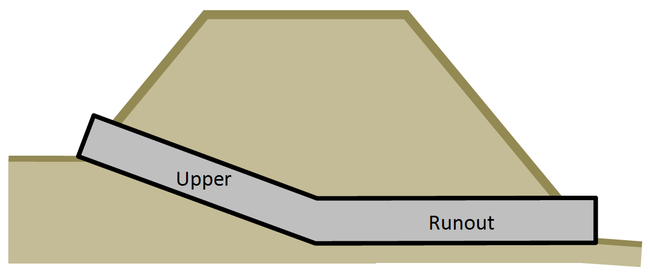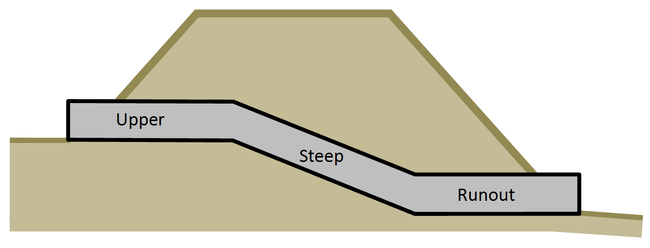HY8:Broken Back Culverts: Difference between revisions
No edit summary |
|||
| Line 17: | Line 17: | ||
|- | |- | ||
! Upper !! Lower !! Upper !! Lower | ! Upper !! Lower !! Upper !! Lower | ||
|- | |- align="center" | ||
| | | | ||
Steep | Steep | ||
| Line 28: | Line 28: | ||
| | | | ||
UR | UR | ||
|- | |- align="center" | ||
| | | | ||
Steep | Steep | ||
| Line 39: | Line 39: | ||
| | | | ||
UR | UR | ||
|- | |- align="center" | ||
| | | | ||
Mild | Mild | ||
| Line 50: | Line 50: | ||
| | | | ||
RU | RU | ||
|- | |- align="center" | ||
| | | | ||
Mild | Mild | ||
Revision as of 21:01, 6 October 2011
Overview of Broken Back Culverts
Broken-back culverts have one or more changes in slope along the length of the culvert. HY-8 supports single and double broken-back culverts, meaning one or two changes in slope. In this manual, the sections for a single broken-back culvert are referred to as ‘Upper’ and ‘Runout’ sections. The sections for a double broken-back culvert are referred to as ‘Upper’, ‘Steep’, and ‘Runout’ sections. Broken-back culverts are used to save on excavation costs or to force a hydraulic jump for energy dissipation and prevent scour in the channel downstream from the culvert.
Broken Back Culvert Computation Approach
To analyze a broken-back culvert, HY-8 computes each section as a single culvert. HY-8 determines the order that each section is calculated based on the slopes of each section. A culvert is steep if the normal depth of flow is less than critical depth and it is mild if normal depth is greater than critical depth.
The following table shows the computational order for single broken-back culverts. Please note that the order is only the initial computation. If necessary, some sections are recomputed with updated boundary conditions. The computation order is shown with the following abbreviations: U = Upper and R = Runout.
| Slope (Steep or Mild) | Check for Hydraulic Jumps | Order | ||
|---|---|---|---|---|
| Upper | Lower | Upper | Lower | |
|
Steep |
Steep |
X |
X |
UR |
|
Steep |
Mild |
X |
X |
UR |
|
Mild |
Steep |
X |
RU | |
|
Mild |
Mild |
RU | ||

